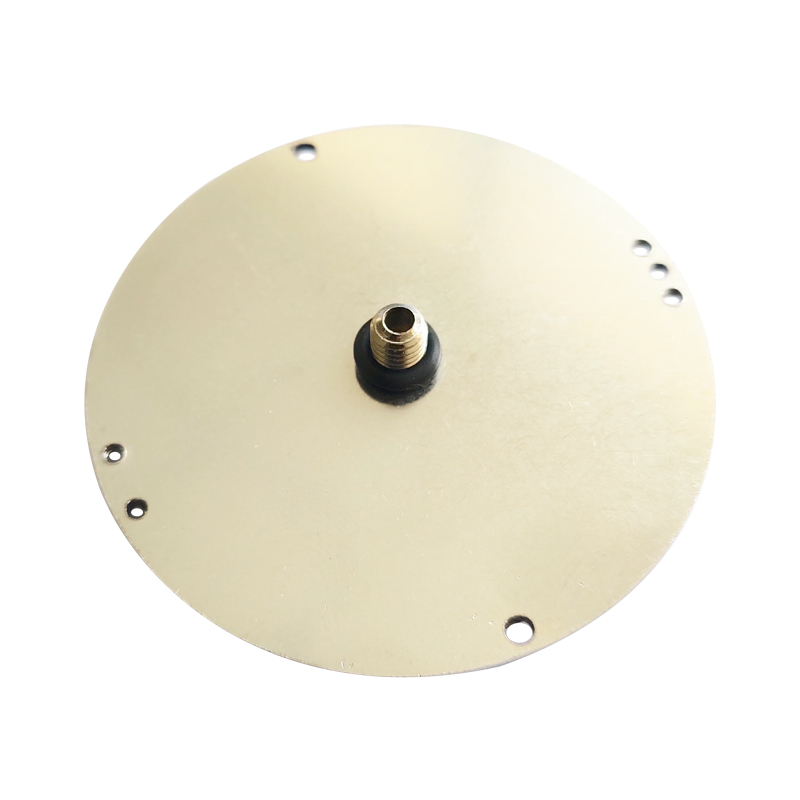
11月 . 23, 2024 21:19 Back to list
High-Quality Dual Diaphragm Differential Pressure Gauges for Industrial Applications
Understanding Dual Diaphragm Differential Pressure Gauges Factory Insights
In industrial processes, maintaining precise measurements of pressure differentials is crucial for operational efficiency and safety. Among various instruments available in the market, dual diaphragm differential pressure gauges stand out for their reliability and accuracy. This article delves into the significance of these gauges, particularly from a factory perspective, focusing on their design, manufacturing processes, and applications.
The Design of Dual Diaphragm Differential Pressure Gauges
The fundamental principle behind dual diaphragm differential pressure gauges is their ability to measure the difference in pressure between two points in a system. The gauge consists of two flexible diaphragms that separate two chambers where the pressures are applied. When a pressure difference exists, one diaphragm moves more than the other, creating a mechanical displacement. This movement is translated into a readable value on a dial or digital display.
The use of dual diaphragms offers significant advantages over single diaphragm designs. The dual construction provides enhanced stability and accuracy, as the two diaphragms can balance each other out, thus reducing the impact of external forces or vibrations on the measurement. Additionally, dual diaphragm gauges tend to have better resistance to corrosion and can handle more aggressive environments, making them suitable for a wide range of applications.
Manufacturing Processes at the Factory
The manufacturing of dual diaphragm differential pressure gauges involves several intricate steps to ensure precision and reliability. The first step is the selection of suitable materials for the diaphragms. Common materials include stainless steel, silicone, and various elastomers, all of which must withstand the specific pressures and environmental conditions of their intended applications.
Once the materials are selected, the diaphragms are produced using advanced techniques such as laser cutting or stamping. Precision machining is critical here, as any minor deviations can lead to inaccurate readings. After machining, the diaphragms undergo processes to enhance their durability, such as heat treatment or surface coating.
The assembly of the gauge is another crucial step. It involves carefully placing the two diaphragms within a housing, ensuring that seals are properly positioned to prevent leaks. The calibration phase follows, where gauges are subjected to known pressure values to verify their accuracy. This step is essential, as it ensures that each gauge meets industry standards and can provide reliable measurements.
dual diaphragm differential pressure gauges factory

Quality Control in the Factory
Quality control (QC) is an integral part of the manufacturing process for dual diaphragm differential pressure gauges. Factories employ various QC methods, including visual inspections, operational testing, and performance evaluations, to ensure that each product adheres to stringent standards before reaching the market.
Advanced production facilities often utilize automated testing equipment to simulate real-world conditions, exposing the gauges to extreme pressures and temperatures. This rigorous testing helps identify any potential flaws or weaknesses in the design before the gauges are shipped out. With quality being paramount, many factories adhere to international ISO standards, ensuring their products are trusted by industries worldwide.
Applications of Dual Diaphragm Differential Pressure Gauges
The versatility of dual diaphragm differential pressure gauges lends themselves to various applications across multiple industries. They are commonly used in pharmaceuticals for monitoring pressure differentials in cleanrooms, ensuring that contamination is minimized. In the oil and gas sector, these gauges are utilized for flow measurements and tank level monitoring, where accurate pressure readings are essential for safety and efficiency.
Other industries, such as water treatment and HVAC systems, also benefit from these gauges. In HVAC systems, for instance, they help monitor air flow and pressure drop across filters, ensuring optimal performance and energy efficiency.
Conclusion
Dual diaphragm differential pressure gauges play a critical role in a multitude of industrial applications, delivering reliable and precise measurements that are essential for maintaining operational integrity. The complexity of their design and the meticulous manufacturing processes involved in their production underscore their importance in today’s technological landscape. As industries continue to evolve and demand more sophisticated measurement solutions, understanding the dynamics of dual diaphragm differential pressure gauges remains imperative for professionals across various sectors. Whether in manufacturing, quality control, or application-specific scenarios, these gauges are indispensable tools that enhance safety and efficiency in industrial processes.
-
Fluke Differential Pressure Gauges Precision Instruments for Industrial Use
NewsMay.25,2025
-
WIKA Differential Pressure Gauge 700.01 - High Accuracy & Durable Design
NewsMay.25,2025
-
Diaphragm Pressure Gauges High-Accuracy & Durable Solutions
NewsMay.25,2025
-
High-Accuracy Differential Pressure Gauge Diaphragms OEM Factories & Services
NewsMay.24,2025
-
Water Fire Extinguisher Pressure Gauge Durable Supplier Solutions
NewsMay.24,2025
-
Handheld Digital Differential Pressure Gauge Portable, High-Accuracy & Real-Time Data
NewsMay.24,2025
